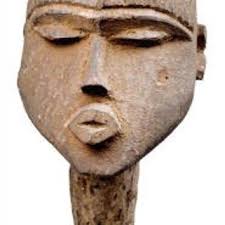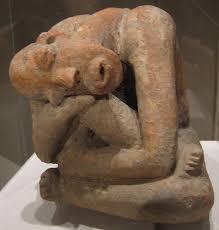Americans warned not to drink hand sanitiser after four die










Americans warned not to drink hand sanitiser after four die
Americans are being warned not to drink hand sanitiser after four people died and three were left with visual impairments.Americans are being warned not to drink hand sanitiser after four people died and three were left with visual impairments.
Fifteen people, all adults, suffered methanol poisoning after drinking alcohol-based hand sanitisers in Arizona and New Mexico in May and June, the US Centers for Disease Control and Prevention (CDC) said.
Methanol is deemed "not acceptable" by the US regulator Food and Drug Administration (FDA).
Alcohol-based hand sanitisers approved by the FDA must contain only ethanol or isopropanol, but some products imported into the country have been found to contain methanol, the CDC added in a report.
It warned that severe methanol poisoning can result in blindness or death, and asked people to check whether their hand sanitisers contained methanol.
An earlier CDC survey taken shortly after US president Donald Trump publicly asked whether injecting disinfectants could treat coronavirus found more than a third of Americans misused such products to try to prevent infection.
The researchers said their findings point to the possibility of more cases in other states, and recommended that safety messaging to avoid ingestion of any alcohol-based hand sanitiser product should continue.
Reference: Evening Standard: Patrick Grafton-Green 7 hrs ago: 8th August 2020
Persistent hiccups could be a new symptom of coronavirus, doctors warn











Persistent hiccups could be a new symptom of coronavirus, doctors warn
Doctors are warning persistent hiccups could be a possible new symptom of coronavirus.Doctors are warning persistent hiccups could be a possible new symptom of coronavirus.
A report published in the American Journal of Emergency medicine describes the case of a man who tested positive for the deadly disease after having hiccups for four days.
The 62-year-old, from Chicago, had initially showed no other symptoms.
He was admitted to hospital and when he had his temperature checked it was 37.3C
But a scan on his lungs showed indications that he was struggling with his lung capacity.
The man was put in an isolation room where he was tested for coronavirus.
His temperature later increased to 38.4C.The report stated: "Here we present a case of persistent hiccups as the presenting symptom of a Covid-19 infection in a 62-year-old man.
"To our knowledge, this is the first case report of persistent hiccups as the presenting complaint in a Covid-19 positive patient in emergency medicine literature."
The doctors from Cook County Health, Chicago, said patients with hiccups should not be dismissed, the Sun reports.They added: "Physicians should keep Covid-19 infection on their differential as more cases are discovered through atypical presentations."
The NHS states the official symptoms of Covid-19 as a high temperature, a new and continuous cough, and a loss or change to your sense of smell or taste.
The NHS says that most people get hiccups sometimes but they should only last a few minutes.
You can usually wait for them to go away or treat them yourself without seeing a GP.
They are usually brought on by stress, strong emotions such as excitement, and eating and drinking.
Reference: Mirror: Danya Bazaraa 10 hrs ago: 8th August 2020
Prince Joachim leaves hospital nine days after emergency brain surgery










Prince Joachim leaves hospital nine days after emergency brain surgery
Prince Joachim of Denmark has been released from a hospital in Southern France nine days after he underwent emergency brain surgery.Prince Joachim of Denmark has been released from a hospital in Southern France nine days after he underwent emergency brain surgery.
Prince Joachim, the younger son of Queen Margrethe II and Prince Henrik, underwent an operation for a blood clot in the brain at University Hospital in Toulouse in France on July 25. The Danish royal, who was moved out from the intensive care unit of the hospital last week and was kept under observation for a few days.
The 51-year-old was later discharged from the hospital on the evening of Monday. The royal has headed back to his summer home, Château de Cayx, which is also located in Toulouse in the middle of the Cahors vineyard.
In a statement released on Tuesday, Danish royal court said: "It is now the assessment of the doctors that the Prince's health has improved to such an extent that His Royal Highness can be discharged, and Prince Joachim is now residing at Château de Cayx."

It is still the family's wish that the Prince obtains the necessary peace and quiet to recover fully," the court requested in its statement.
It also said that the prince and his wife, French-born Princess Marie, "would like to take this opportunity to thank the hospital personnel involved for a professional course of treatment."
The royal court released a statement regarding Joachim's health condition after his successful surgery on July 25 and followed it up with updates about his recovery. In the statement, the palace explained:
"The blood clot in the brain was due to a sudden dissection of an artery, and the hospital's medical team estimates that the risk of recurrence is very small once the artery has healed."
Prince Joachim of Denmark sitting on a bus: In the picture: Prince Joachim of Denmark and his bride Princess Marie leave following their wedding in Mogeltonder May 24, 2008.
Younger son of Queen Margrethe II and Henrik, Prince Consort of Denmark and sixth in line to the Danish throne, Prince Joachim got engaged to Marie Cavallier on October 2007.
Over 200 royal guests and dignitaries were invited for the royal wedding which took place in a 800-year-old church in Denmark.
Reuters.© Reuters. In the picture: Prince Joachim of Denmark and his bride Princess Marie leave following their wedding in Mogeltonder May 24, 2008.
Younger son of Queen Margrethe II and Henrik, Prince Consort of Denmark and sixth in line to the Danish throne, Prince Joachim got engaged to Marie Cavallier on October 2007.
Over 200 royal guests and dignitaries were invited for the royal wedding which took place in a 800-year-old church in Denmark.
Reuters.Joachim was holidaying with his wife Marie and their two children Princess Athena and Prince Henrik when he was rushed to the hospital.
They were also joined by Joachim's ex-wife Countess Alexandra of Frederiksborg and the former couple's two sons Prince Nikolai and Prince Felix for a few days, to celebrate Felix's 18th birthday in July.
Reference: International Business Times: Amanda 13 hrs ago: 5th August 2020
UK 'likely to reject' Russia coronavirus vaccine set for mass rollout in October











UK 'likely to reject' Russia coronavirus vaccine set for mass rollout in October
Russia has boasted it will start a mass vaccination program of its citizens against coronavirus in October - but Britain is reportedly set to reject the jab if offered it.Russia has boasted it will start a mass vaccination program of its citizens against coronavirus in October - but Britain is reportedly set to reject the jab if offered it.
Moscow yesterday bragged its vaccine would be a "Sputnik moment" as it is set to be the first country in the world to develop one.
Health Minister Mikhail Murashko said on Saturday that the Gamaleya Institute, a state research facility in Moscow, had completed clinical trials of the vaccine and paperwork is being prepared to register it.
He said doctors and teachers would be the first to be vaccinated, and added: "We plan wider vaccinations for October."
Russia's first potential COVID-19 vaccine would secure local regulatory approval in August and be administered to health workers soon thereafter.
Yet the speed at which Russia is moving to roll it out has prompted some Western media to question whether Moscow is putting national prestige before science and safety.
The head of the Russian Direct Investment Fund, Kirill Dmitriev, has likened what he said was Russia's success in developing a vaccine to the Soviet Union's 1957 launch of Sputnik 1, the world's first satellite.

Britain takes a similar view to the US in being sceptical of the Russian vaccine and is unlikely to be ordering it in for use here, the Telegraph reports.One source said: “We would use a vaccine if we trusted the data.”
Crucially, it depended on how open the Russians or Chinese were, the source said.
Russia has released no scientific data proving the vaccine’s safety or efficacy while details of the British vaccine being tested have already been published in The Lancet.
Public health experts say it would be impossible for Britain to accept a vaccine from another country without all internationally recognised protocols being met.
More than 100 possible vaccines are being developed around the world to try to stop the COVID-19 pandemic.
At least four are in final Phase III human trials, according to World Health Organization (WHO) data, including three developed in China and one in the UK.
Reference: Mirror: Jeremy Culley 10 hrs ago: 2nd August 2020
Articles - Most Read
- Home
- LIVER DIS-EASE AND GALL BLADDER DIS-EASE
- Contacts
- African Wholistics - Medicines, Machines and Ignorance
- African Wholistics -The Overlooked Revolution
- African Holistics - Seduced by Ignorance and Research
- The Children of the Sun-3
- Kidney Stones-African Holistic Health
- The Serpent and the RainBow-The Jaguar - 2
- PART ONE: DIS-EASE TREATMENT AND HEALTH-3
- 'Tortured' and shackled pupils freed from Nigerian Islamic school
- King Leopold's Ghost - Introduction
- PART ONE: DIS-EASE TREATMENT AND HEALTH-4
- PART ONE: DIS-EASE TREATMENT AND HEALTH-2
- PART ONE: DIS-EASE TREATMENT AND HEALTH-5
- African Wholistics - Medicine
- Menopause
- The Black Pharaohs Nubian Pharaohs of Ancient Egypt
- The Mystery System
- PART ONE: DIS-EASE TREATMENT AND HEALTH-6
Who's On Line?
We have 122 guests and no members online
Ad Agency Remote
Articles - Latest
- The Male G Spot Is Real—and It's the Secret to an Unbelievable Orgasm
- Herbs for Parasitic Infections
- Vaginal Care - From Pubes to Lubes: 8 Ways to Keep Your Vagina Happy
- 5 Negative Side Effects Of Anal Sex
- Your Herbs and Spices Might Contain Arsenic, Cadmium, and Lead
- Struggling COVID-19 Vaccines From AstraZeneca, BioNTech/Pfizer, Moderna Cut Incidence Of Arterial Thromboses That Cause Heart Attacks, Strokes, British Study Shows
- Cartilage comfort - Natural Solutions
- Stop Overthinking Now: 18 Ways to Control Your Mind Again
- Groundbreaking method profiles gene activity in the living brain
- Top 5 health benefits of quinoa
- Chromolaena odorata - Jackanna Bush
- Quickly Drain You Lymph System Using Theses Simple Techniques to Boost Immunity and Remove Toxins
- Doctors from Nigeria 'facing exploitation' in UK
- Amaranth, callaloo, bayam, chauli
- 9 Impressive Benefits of Horsetail
- Collagen The Age-Defying Secret Of The Stars + Popular Products in 2025
- Sarcopenia With Aging
- How to Travel as a Senior (20 Simple Tips)
- Everything you need to know about mangosteen
